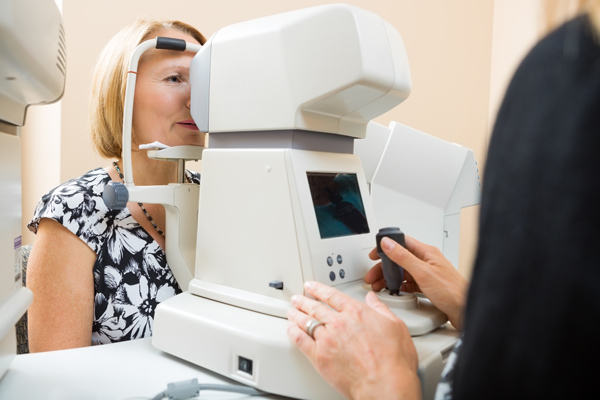An inexpensive, non-invasive eye test could help physicians diagnose Parkinson’s disease, before the onset of debilitating symptoms, such as muscle stiffness and tremors. Using rat models, researchers at the UCL Institute of Ophthalmology have developed a new method of monitoring retinal changes consistent with the early stages of Parkinson’s.
The method uses ophthalmic instruments to perform optical coherence tomography (OCT) – a technology which is already in use by optometrists and other eye care professionals. The method developed by the researchers was published in the journal, Acta Neuropathologica Communications. In addition to helping patients receive an early diagnosis, the technique could be used to monitor patient response to Parkinson’s treatment. The same technique has been tested on people with glaucoma, and clinical trials involving Alzheimer’s patients are set to start soon.
“This is potentially a revolutionary breakthrough in the early diagnosis and treatment of one of the world’s most debilitating diseases,” said study leader Professor Francesca Cordeiro, UCL Professor of Glaucoma & Retinal Neurodegeneration Studies. “These tests mean we might be able to intervene much earlier and more effectively treat people with this devastating condition.”
Parkinson’s disease is the second most common neurodegenerative disease worldwide, with an incidence rate of approximately one in every 500 people. Symptoms of Parkinson’s disease – including tremors, muscle stiffness and slowness of movement – usually do not manifest themselves until nearly three quarters of the brain’s dopamine-secreting cells have been irreversibly damaged.
After visualizing the retinal changes in the rat model of Parkinson’s disease, Cordeiro and her colleagues treated the subjects with a neuroprotectant anti-diabetic drug, Rosiglitazone. The drug was found to reduce retinal cell death, indicating that it could be a potentially promising treatment for Parkinson’s disease.
“These discoveries have the potential to limit and perhaps eliminate the suffering of thousands of patients if we are able to diagnose early and to treat with this new formulation,” said Dr. Eduardo Normando, Consultant Ophthalmologist at Western Eye Hospital and UCL, and primary author on the publication. “The evidence we have strongly suggests that we might be able to intervene much earlier and more effectively in treating people with this devastating condition, using this non-invasive and affordable imaging technique.”












Join or login to leave a comment
JOIN LOGIN